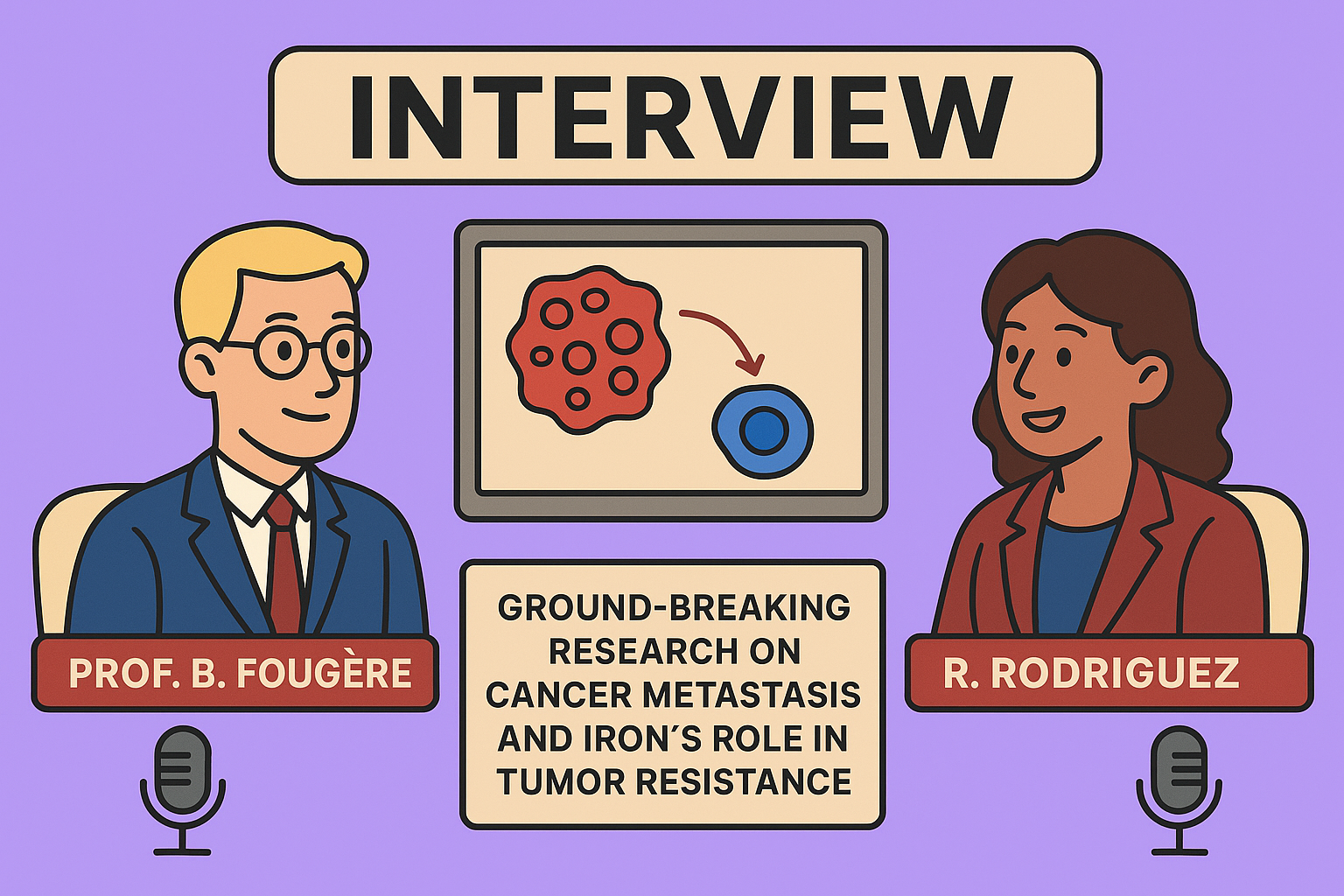Cancer remains a formidable challenge, with its most lethal aspect often being the metastatic spread of cells to vital organs. These secondary tumors are notoriously difficult to treat, leading to organ failure and progression of the disease. However, recent groundbreaking research from a French team, led by a biologist and chemist from the CNRS, offers a significant new hope. Their work, published recently, focuses on an unexpected vulnerability of cancer cells: their reliance on iron.
Understanding the Enemy: Metastases and Their Adaptability
When we talk about cancer, it’s not the primary tumor itself that is always the deadliest, but rather its capacity to metastasize. Take breast cancer, for instance: a tumor develops, becomes vascularized (meaning it builds its own blood supply), and establishes lymphatic connections. This allows tumor cells to travel through both the bloodstream and the lymphatic system, often reaching lymph nodes and forming secondary growths (like lumps under the armpit). The danger arises when these cells journey further, establishing new tumors in distant organs, which we call metastases.
What makes these metastatic cells so insidious is their ability to adapt and survive in new environments, often resisting conventional treatments. This adaptability, researchers found, is intricately linked to their consumption of iron.
The Iron Paradox: Cancer’s Strength and Weakness
Iron, a fundamental element predating cellular life, plays a crucial role as a catalyst in many biological reactions. For cancer cells, particularly those preparing to metastasize, iron is essential. It enables them to undergo metabolic and epigenetic changes, effectively “changing their identity” to escape treatment and survive in new locations.
The research team observed that these highly adaptable, migratory cancer cells temporarily accumulate significantly more iron than other proliferating cancer cells. This excessive iron, while seemingly an asset for adaptation, turns out to be a critical vulnerability. The scientists wondered if this iron abundance could be exploited.
A Novel Therapeutic Strategy: Turning Iron into a Weapon
The core of this breakthrough lies in a fascinating paradox: cancer cells need a lot of iron to adapt and resist, but too much iron becomes detrimental to their survival. The researchers discovered that by manipulating how iron is utilized within these cells, they could transform an adaptive mechanism into a trigger for cell mortality.
They have developed a new class of molecules designed to alter the way iron is processed and localized within cancer cells. When exposed to these molecules, the excess iron in these cells becomes misdirected, leading to internal degradation and cell death. Essentially, what cancer cells use as an “arm of adaptation” can be turned into an “arm of mortality.”
Important Clarifications about Iron and Cancer
It’s crucial to understand that this research does not suggest a direct link between dietary iron intake (or lack thereof) and cancer protection or risk. Having anemia, for example, does not protect against cancer, nor does a normal iron level put one at increased risk. The body’s immune system, vital for fighting tumor growth, also requires iron to function effectively. This research specifically targets the manipulation of iron within aggressive cancer cells, not overall bodily iron levels.
The Road Ahead: Broadening the Reach of This Discovery
An exciting aspect of this research is its potential applicability across various cancer types. The hypothesis is that nature might have developed a common chemical mechanism for cells to migrate and metastasize. Collaborations between institutions like Institut Curie and Institut du Thorax could help validate this approach for different classes of cancer. The goal is not to replace existing effective treatments, but to provide a powerful new weapon in the oncologist’s arsenal, particularly for resistant or advanced cases.
The Timeline to Treatment
While the findings are incredibly promising, it’s important to set realistic expectations for patients. The research is currently conducted at the cellular level in laboratories, not on human patients. Developing a new drug is a lengthy process, often taking around ten years. However, thanks to the integrated environment at Institut Curie, which brings together clinicians and researchers with the capacity for clinical trials, there’s an optimistic projection: if all goes well, clinical trials could potentially begin within five years. While this may seem long to the public, in the world of scientific research, it’s considered rapid progress. This collaborative and progressive approach also means that other promising drug prototypes might emerge even sooner, showcasing the beauty of collegiality in research.
This revolutionary work offers immense hope, marking a significant step forward in our enduring fight against cancer.
🔍 Discover Kaptan Data Solutions — your partner for medical-physics data science & QA!
We're a French startup dedicated to building innovative web applications for medical physics, and quality assurance (QA).
Our mission: provide hospitals, cancer centers and dosimetry labs with powerful, intuitive and compliant tools that streamline beam-data acquisition, analysis and reporting.
🌐 Explore all our medical-physics services and tech updates
💻 Test our ready-to-use QA dashboards online
Our expertise covers:
🔬 Patient-specific dosimetry and image QA (EPID, portal dosimetry)
📈 Statistical Process Control (SPC) & anomaly detection for beam data
🤖 Automated QA workflows with n8n + AI agents (predictive maintenance)
📑 DICOM-RT / HL7 compliant reporting and audit trails
Leveraging advanced Python analytics and n8n orchestration, we help physicists automate routine QA, detect drifts early and generate regulatory-ready PDFs in one click.
Ready to boost treatment quality and uptime? Let’s discuss your linac challenges and design a tailor-made solution!
Get in touch to discuss your specific requirements and discover how our tailor-made solutions can help you unlock the value of your data, make informed decisions, and boost operational performance!

Comments